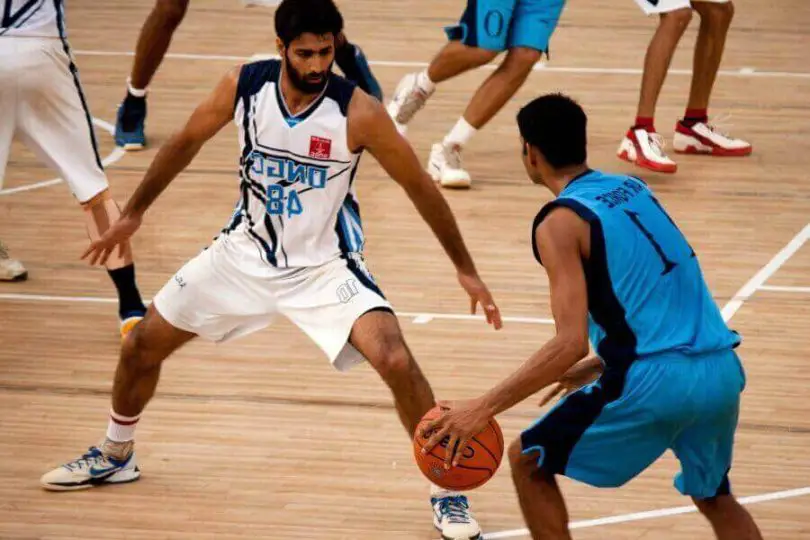If you’re a fan of college basketball, you may be wondering just how many Division 1 (D1) teams there are in the NCAA. In this article, we’ll answer that question and explore some of the key facts and figures about D1 basketball.
From the number of teams to the history of the NCAA tournament, we’ll cover everything you need to know about this exciting level of college basketball.
So, whether you’re a die-hard fan or just getting started, read on to discover the world of D1 basketball and how it fits into the broader landscape of college sports.
Overview of D1 Basketball Teams
When it comes to college basketball, the NCAA Division I (D1) is the highest level of competition for both men’s and women’s basketball teams. D1 basketball teams are known for their skill, athleticism, and competitive spirit. In this section, we will provide an overview of the number of D1 basketball teams.
Number of D1 Men’s Teams
As of the 2022-2023 season, there are 357 D1 men’s basketball teams in the United States. These teams are spread across 32 conferences, with each conference having anywhere from 7 to 15 teams. The conferences are divided based on geography, with teams from the same region competing against each other.
Number of D1 Women’s Teams
There are currently 353 D1 women’s basketball teams in the United States. These teams are also spread across 32 conferences, with each conference having anywhere from 10 to 14 teams. The conferences are divided based on geography, with teams from the same region competing against each other.
Geographical Distribution of D1 Teams
When it comes to the geographical distribution of Division 1 (D1) basketball teams, the United States is divided into 32 conferences, each with its own set of teams. The conferences are spread out across the country, with some regions having more conferences than others.
The West Coast Conference and the Pac-12 Conference are two of the conferences located on the west coast of the United States. The West Coast Conference has 10 teams, while the Pac-12 Conference has 12 teams.
Moving eastward, the Mountain West Conference has 11 teams, while the Big Sky Conference has 12 teams. The Big Sky Conference is primarily made up of teams from the western United States, while the Mountain West Conference is made up of teams from the western and central United States.
The Midwest and East Coast regions have a higher concentration of conferences and teams. The Big Ten Conference, for example, has 14 teams, while the Atlantic Coast Conference (ACC) has 15 teams. The Big East Conference has 11 teams, and the Southeastern Conference (SEC) has 14 teams.
The Ivy League Conference is unique in that it is made up of eight private institutions located in the northeastern United States. The Patriot League Conference is also located in the northeastern United States and is made up of 10 schools.
Overall, the geographical distribution of D1 basketball teams is spread out across the United States, with a higher concentration of conferences and teams in the Midwest and East Coast regions.
Historical Evolution of D1 Teams
Initial Number
When the NCAA was formed in 1906, there were only 41 colleges and universities that participated in intercollegiate basketball. These schools were divided into two divisions: University and Non-University. The University Division consisted of 22 teams, while the Non-University Division had 19 teams.
In 1948, the NCAA established the “University Division” and “College Division” to separate large and small schools. The University Division was composed of 168 schools, while the College Division had 372 schools.
Current Status
Today, there are 357 Division I basketball teams in the NCAA. These teams are divided into 32 conferences, with the Atlantic Coast Conference (ACC), Big Ten Conference, and Southeastern Conference (SEC) being some of the most well-known.
Each conference has its own set of rules and regulations, and teams compete against each other in conference play before advancing to postseason tournaments.
The number of D1 teams has increased over the years due to the growth of college sports and the popularity of basketball. However, not all schools are able to meet the requirements to compete at the Division I level, which includes factors such as the number of sports offered, the size of the athletic department, and the number of scholarships available.
Factors Influencing the Number of D1 Teams
When it comes to determining the number of Division 1 basketball teams, there are several factors that come into play. These factors include:
1. Population and Geography
The number of D1 basketball teams is influenced by the population and geography of a region. For example, states with larger populations tend to have more D1 teams. Additionally, regions with a higher concentration of basketball talent may also have more teams.
2. Funding and Budgets
Funding and budgets also play a significant role in the number of D1 basketball teams. Universities with larger budgets can afford to invest more in their athletic programs, including basketball. This allows them to recruit top talent and build competitive teams.
3. Conference Affiliations
The conference affiliations of universities also impact the number of D1 basketball teams. Conferences with more members tend to have more teams, as do conferences with a strong basketball tradition.
4. NCAA Regulations
Finally, NCAA regulations also influence the number of D1 basketball teams. The NCAA sets limits on the number of scholarships and coaching staff that a team can have, which can impact a university’s ability to field a competitive team.
Overall, the number of D1 basketball teams is influenced by a variety of factors, including population, funding, conference affiliations, and NCAA regulations. Understanding these factors can help provide insight into why certain regions or universities have more D1 teams than others.
Impact of D1 Teams on College Basketball
D1 basketball teams have a significant impact on college basketball. They are the top level of college basketball and are highly competitive. Here are some ways in which D1 teams impact college basketball:
- Recruiting: D1 teams have the resources to recruit top talent from high schools and prep schools across the country. They offer scholarships, facilities, and exposure to players, which can help them attract the best players in the country.
- TV Coverage: D1 teams receive significant TV coverage, which helps to promote college basketball as a whole. Major networks like ESPN and CBS broadcast D1 games, which can attract a large audience.
- Revenue: D1 basketball generates significant revenue for colleges and universities. Ticket sales, merchandise, and TV contracts all contribute to the revenue generated by D1 basketball. This revenue can be used to fund other sports programs and academic initiatives.
- March Madness: The NCAA Tournament, also known as March Madness, is one of the biggest events in college basketball. It features the top D1 teams from across the country and attracts a large audience. The tournament generates significant revenue for the NCAA and its member institutions.
- Athletic Scholarships: D1 teams offer athletic scholarships to players, which can help them pay for their education. This can be a significant benefit for players who may not have been able to afford college otherwise.
Overall, D1 basketball teams have a significant impact on college basketball. They attract top talent, generate revenue, and provide opportunities for players to receive athletic scholarships.
Future Projections of D1 Teams
As college basketball continues to grow in popularity, the number of Division 1 teams is expected to increase in the coming years. According to projections, the number of D1 teams is expected to reach 360 by the year 2025.
This increase in teams is largely due to the growth of basketball programs at smaller schools, as well as the increasing popularity of the sport in non-traditional basketball states.
Additionally, with the recent changes to NCAA rules allowing athletes to profit off their name, image, and likeness, more athletes may be incentivized to attend smaller schools with less competition for sponsorship deals.
However, it’s important to note that not all schools will be able to sustain a D1 basketball program. The cost of running a competitive basketball program can be significant, and smaller schools may struggle to fund their programs. As a result, we may see some schools drop down to lower divisions or eliminate their basketball programs altogether.
Overall, the future of D1 basketball looks bright, with more opportunities for athletes and more schools getting involved. However, it’s important to keep in mind the financial challenges that some schools may face in maintaining a D1 program.







